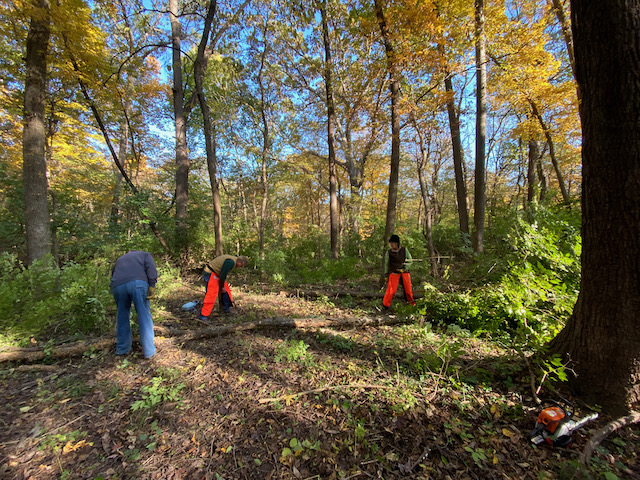
It is very exciting to kick off our habitat restoration work at New Salem Historic Site in partnership with the Illinois Department of Natural Resources! While the site is best known and visited for the recreated village where Lincoln once lived, much of the site is forested land, from the floodplains along the Sangamon River to the upland forests crisscrossed by several miles of hiking trails. Like most natural areas, regular management is necessary to deal with invasive species that have displaced so much of our native flora.
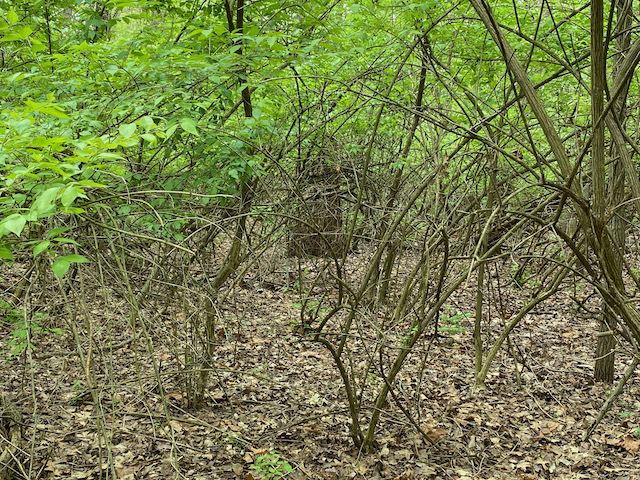
The primary invader of the forest at New Salem is Amur honeysuckle or Lonicera maackii. This bush was introduced as an ornamental and later planted “for wildlife”. Unfortunately, it was discovered too late that honeysuckle was incredibly efficient at spreading and crowding out desirable native vegetation, and native plant species are much preferred and necessary for native wildlife. When you look through the woods in late fall, the sickly green that fills the understory is nearly all honeysuckle.
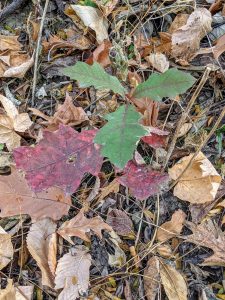
Without intensive woodland management, the diversity of native shrubs, tree seedlings, and herbaceous plants that should be present decline and disappear, not able to persist under the dense shade of this invasive shrub.
Along the sunny woodland edges and formerly open fields at the park, you can find Autumn olive (Eleagnus umbellata), another problematic invasive. This large shrub was also introduced decades ago as a wildlife planting. It is easily recognizable from a distance, as the silver undersides of the leaves are quite visible whenever there is a breeze.
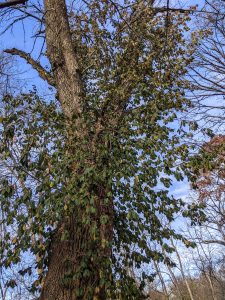
Wintercreeper or Euonymus fortunei is a common groundcover plant used in landscapes. There are large expanses of this pesky plant in the village. While it is a nuisance as it creeps along the ground, spreading vegetatively and smothering everything in its path, it becomes especially problematic when allowed to climb trees. Not only is it bad for the tree to be engulfed in this evergreen vine, it produces seed when it climbs, allowing birds to spread it far from the original planting. We are seeing more seedlings and small patches of wintercreeper where we are working now. Once established, it is difficult to remove. Pulling usually results in small parts of the plant left behind to re-establish. The waxy leaf surface makes it difficult for herbicide to stick.
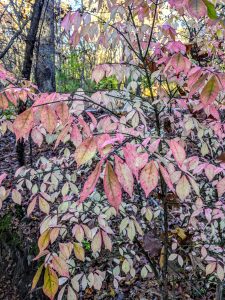
Other woody invasives can be found scattered throughout the park in smaller, though increasing, numbers. Those include barberry (Berberis sp.), Japanese honeysuckle (Lonicera japonica), Oriental bittersweet (Celastrus orbiculatus), tree of heaven (Ailanthus altissima), multiflora rose (Rosa multiflora), privet (Ligustrum sp.) and burning bush (Euonymus alatus). These are being removed as well, whenever they are encountered by our volunteers.
While birds and other wildlife will eat the fruits of these invasive plants (hence the rapid spread!), they tend to be less nutritious. They also create a food desert for much of the year. Honeysuckle might produce a large amount of fruit, but it only persists for a couple weeks! Where once there might have been 50 plant species, with flowers and fruits occurring at different times throughout the year, now that number is greatly limited. Many insects depend on a particular and very limited selection of plants. In turn, most of our songbirds depend on those very insects for their survival.
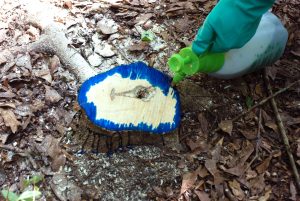
How are we removing these plants? Most are being cut with a lopper or chainsaw and treated immediately with an appropriate herbicide for cut stump application. You might notice stumps stained blue as you pass through the work area. This is a dye added to the herbicide, so we can be sure not to miss any cut stumps. If a honeysuckle is cut and not treated, it will respond with vigorous regrowth in the spring. Small seedlings can be pulled, but pulling many large plants is not desirable. Not only is it physically challenging, but the disruption of the soil can impact surrounding tree roots and soil structure, bring weed seeds to the surface, and make a perfect seed bed for other invasives to fill the void.
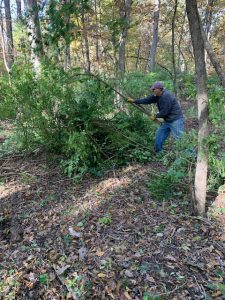
Brush is piled throughout the area to dry, with plans for prescribed fire in the future. More on that to come.
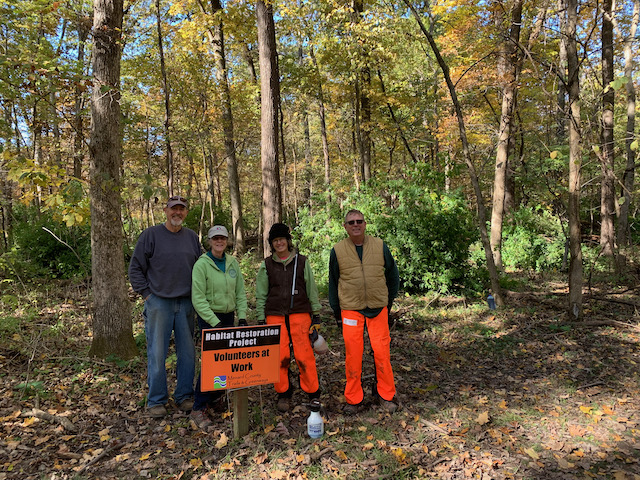
So what can you do to help? New volunteers are always welcome. If you can wield a lopper or drag brush, there’s a job for you! If you are skilled with a chainsaw, join the crew! Workdays are being scheduled on weekdays and weekends as weather allows in the months ahead. Email us at menardctg@gmail.com to be notified of upcoming events, or better yet, become a member at https://menardcountytrailsandgreenways.org/join/. Can’t make it out to our workdays? You can do your part at home by removing these invasive species from your home landscape. Unfortunately, several are common landscape plants.
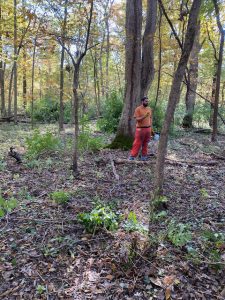
As the understory is opened up and management continues, we will see the ecological benefits of habitat restoration, but as we are working at a historical site, it’s also worth mentioning that this work is historically relevant, returning the landscape to something more like Lincoln would have encountered during his years at New Salem! Watch for upcoming blogs as we cover some of the native trees and shrubs that occur at New Salem and the progress reports on this project.
Additional Project Information and Slide Show
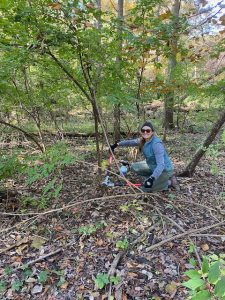 Post author, Alana McKean, (pictured here) an avid native plant gardener, is the curator of the woody plant collection at Starhill Forest Arboretum. Alana also serves as the Illinois Native Plant Society Central Chapter newsletter editor, and is an active member of the International Oak Society. Alana worked in her native Iowa as a Conservation Planner with the Nature Conservancy and a county conservation naturalist. She is an ISA certified arborist and a 2008 graduate of Illinois College with degrees in Biology and Environmental Science.
Post author, Alana McKean, (pictured here) an avid native plant gardener, is the curator of the woody plant collection at Starhill Forest Arboretum. Alana also serves as the Illinois Native Plant Society Central Chapter newsletter editor, and is an active member of the International Oak Society. Alana worked in her native Iowa as a Conservation Planner with the Nature Conservancy and a county conservation naturalist. She is an ISA certified arborist and a 2008 graduate of Illinois College with degrees in Biology and Environmental Science.
